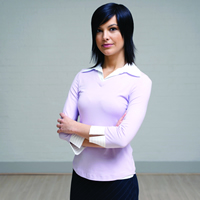Allegro
Release tension and perform better
Musicians' Assistance Program
Volume 113, No. 3March, 2013
The office of the Musicians’ Assistance Program is your one-stop shop for musicians’ health. We offer counseling – both one-on-one and in groups – as well as information on all kinds of social services, including health insurance, housing, food stamps and more. All services are free to Local 802 members. Contact us at MAP@Local802afm.org or (212) 397-4802.
Would you like to learn some simple exercises that can release tension and make you stronger as a musician? I am pleased to present a workshop for musicians that will teach you how to identify the tension in your body and why you may have chronic discomfort from years of performing. I will also teach you exercises to address these issues. My goal is to give you tools for a pain-free performance experience and more comfort all around.
I recently introduced Local 802 member Jon-Erik Kellso to these techniques. Jon-Erik has been a professional jazz trumpeter for as long as he can remember. He’s playing better than ever. But after more than 30 years, he says his joy of performing is getting some interference from unfamiliar aches, pains and fatigue. Jon-Erik also says that instead of standing up to perform, he’s sitting more and more. This means his chair will largely determine if he’s comfortable during the gig, and how good or bad his back feels after. He told me, “I used to get away with a lot more.”
Sound familiar? The type of chronic symptoms Jon-Erik reports – overly tight back shoulders and hamstrings – are his body’s way of reporting something’s wrong. By paying attention to his symptoms, Jon-Erik’s on his way to restoring his body’s ability to withstand many more years of performing, recording and touring. According to Jon, “I’m impressed by how quickly I could let go of my tension. It’s amazing how much change is possible in a short amount of time. It feels good to be aware and feel relaxed.”
WHERE TO BEGIN
I’ve been introducing Jon-Erik to a method called Applied Body Logic, which has begun to help get his body back to feeling the way it used to. Here are the first steps:
-
Recognize where you hold tension in your body.
-
Pay attention to how your body feels when you perform; notice where you tighten up or become uncomfortable after a performance.
-
Come to our workshop to learn techniques to help release some of that tension!
HOW YOU MOVE
Paying attention to your physical self is especially important for musicians. How you sit or stand and hold your instrument can help you or hurt you. A poor position can lead to aches and pains that can worsen the more you perform. Over time, this can begin to sap your endurance.
Also, how do you use your body during the day? Notice any habitual movements or posture that challenge your flexibility or heighten chronic aches or pains. Once you can recognize what’s tying your body in knots, you might feel better by simply altering how you sit or stand, or even how you fall asleep on a bus or plane.
(TIP: Check out how you work with your computer. Do you stick your neck out, slouch, or even recline? Often, just by changing posture, you can ease some chronic back pain.)
EVERYTHING’S CONNECTED
Some chronic discomfort is symptomatic of a body out-of-balance. Acute physical injury or trauma often contributes to this. The human body is programmed to de-stress an injured area, which can set off a lifetime of “compensation.” What do I mean by that? Let’s say I sprain my left ankle. I will begin to favor it, and the right side will pick up the slack. Without intervention, the right side will get stronger, and the left side weaker. From top to bottom, the whole body gets involved in this compensation.
THE CORE’S THE THING!
Some good news: the human body can be coaxed back toward ideal alignment at any age. Since bad movement patterns can wreak havoc on our posture, substituting better movement patterns can start turning back the clock. The key is strong core muscles. Just as a building requires a firm foundation to remain upright, so does the body require a strong core. Strength from the core muscles helps draw the muscles and skeleton towards balance.
IT’S HOW YOU DO IT
How you exercise to build up your core can be more important than the exercise itself. One type of exercise doesn’t fit all, just like one music teacher isn’t for everyone. Ultimately, it’s up to you to find ways to keep moving toward a better body.
WANT TO KNOW MORE?
Come join us on Friday, March 15 from 2 p.m. to 4 p.m. for a workshop that addresses everything in this article, and much more. The workshop is free but SPACE IS LIMITED. The location will be given to you once you pre-register by sending an e-mail to MAP@Local802afm.org. See you there!
Karin Fantus has been practicing Authentic Pilates for over 20 years, and was certified to teach it in 2002. She accomplished her teacher training at Pilates, Inc., which was supervised by a protégé of the legendary Joseph Pilates. She is also certified to teach MELT (Myofascial Energetic Length Technique).
Karin teaches Pilates mat classes around Manhattan and also teaches at her private Upper West Side studio. After more than 150,000 miles of bicycling, she attributes her healthy knees and back to the study of Pilates.

